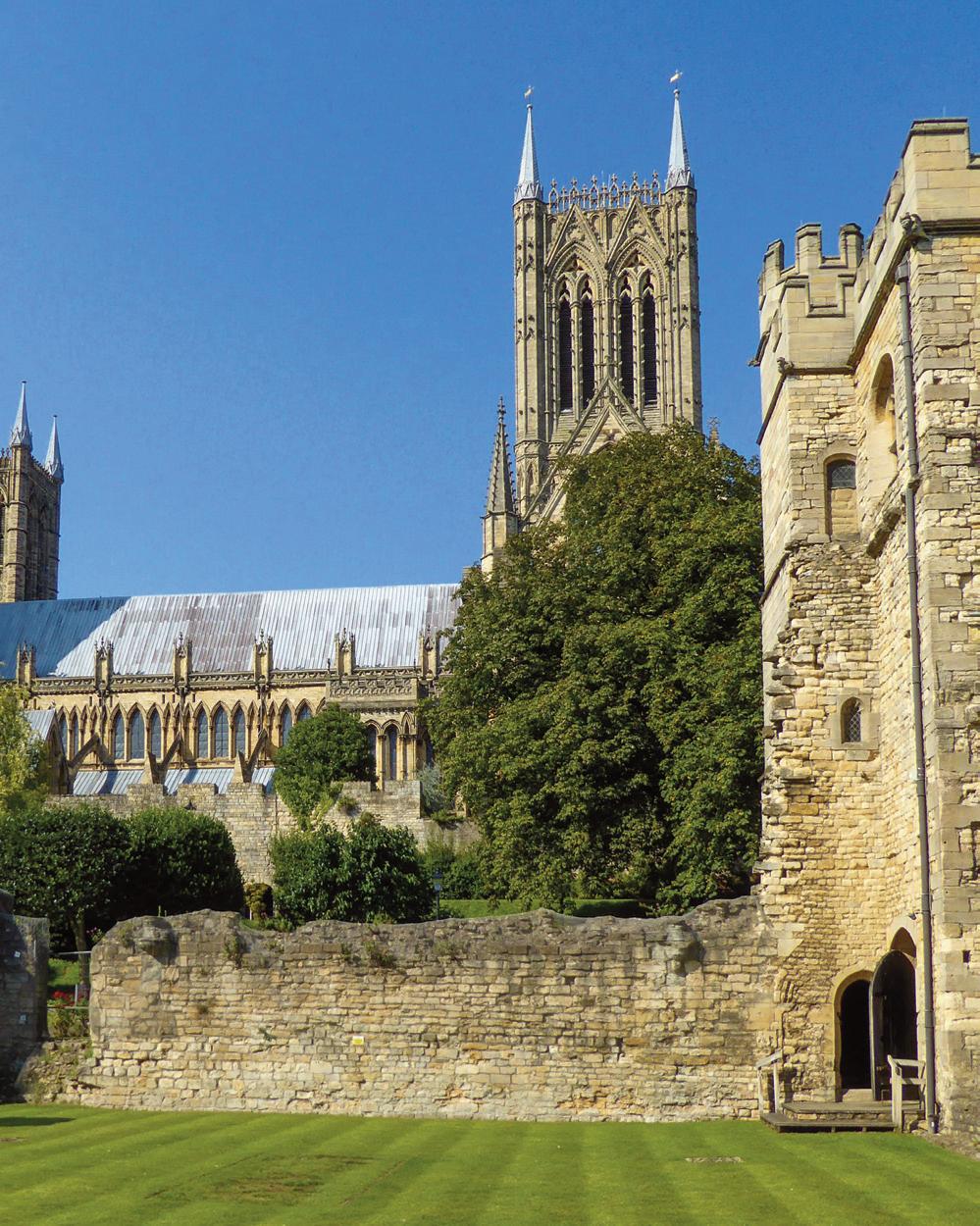
11 minute read
BUILDING LINCOLN Local
JEW’S COURT
According to a questionable account by Matthew of Paris (d. 1259), around August 1255 Lincoln’s Jewish community stole away an eight-year-old boy, Hugh, who lived at the bottom of Steep Hill, ritually killing him and hiding his corpse down a well. However the boy came by his death, the events following the discovery of his body are considered to be among the most shameful chapters in Lincoln’s history. A Jewish resident named Jopin was arrested first. Terrified by threats of torture and death, and before being hanged on Canwick Hill, Jopin’s coerced testimony led to a series of purges and executions against Lincoln’s Jewish community. The episode even drew Henry III and his queen to Lincoln that October. Jews House and Jews’ Court. Hugh’s body was interred in Lincoln Cathedral, where today the remains of his altar tomb bear a plaque cautioning against the fictions and prejudice involved. The boy’s skeleton was unearthed there in 1791 and sketched by the artist Grimm before being replaced. According to Sympson’s Lincoln (1906), a spurious tradition linked the boy’s alleged murder to Jews’ Court, a building on the slope of Steep Hill with medieval origins, which has been extensively redeveloped and now bears a seventeenth-century appearance. These were unhappy times for Lincoln’s Jewish quarter. The chronicler Holinshed tells us that in 1265 insurgent barons attacked Lincoln’s Jews, ‘entered their synagogue, and burnt the book of their law’. Tradition says this synagogue was also at Jews’ Court, in a front room on the first floor. This building is today a bookshop and home to the Society for Lincolnshire History and Archaeology. Fittingly, in 1992 its Upper Room was also the location for the modern resumption of worship by the Lincolnshire Jewish Community, after a gap of 700 years. Immediately south, Jew’s House (built 1150–60) boasts an original, beautifully moulded arched doorway, over which projects the buttress shaft of a fireplace and chimney. In 1290 this house belonged to another member of the Jewish community, Belasset of Wallingford, who was hanged for ‘clipping the king’s coin’ (and melting the clippings to make new money). It is now a very fine restaurant. n
Advertisement



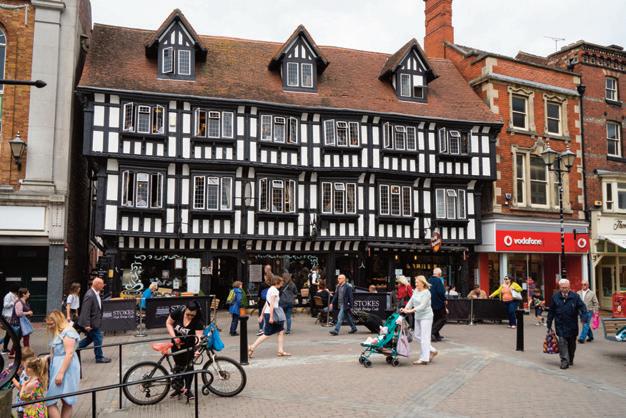

<< LINCOLN’S TUDOR TRIO...
Shown here are Leigh Pemberton House (AKA the Tourist Information Centre); High Bridge (AKA Stokes) and The Harlequin (AKA The Actors’ Tavern). The jettied Tudor building Leigh-Pemberton House was built around 1543 as a city merchant’s residence. In 1929 the building was extensively restored by the National Provincial Bank (the National Westminster Bank). On 31 May 1979 the building was presented to the dean and chapter of Lincoln, for the cathedral to use as it saw fit: in recognition of this benefaction, it was named after the bank’s then chairman, Robert Leigh-Pemberton, who later became Governor of the Bank of England. High Bridge was built around 1160. It carries High Street across the River Witham, and is the only bridge from this era in Britain still bearing houses. Most of the visible timber is the sixteenth-century original, and during the early 20th century renovation, carvings of King Edward VII and Queen Alexandra were added to the top corners to celebrate their coronation (also in 1902). Since the early 1900s, Stokes’ High Bridge Café has been situated within. There has been a playhouse in Lincoln since at least 1744, when one opened in a lane under the castle (later Drury Lane) for William Herbert’s Company of Comedians. Nearby, the late fifteenthcentury half-timbered building atop Steep Hill became an actors’ tavern, the Harlequin, before the theatrical circuit migrated downhill in 1763 to a building in the King’s Arms Yard, Clasketgate. n

<< THE TWO PRISONS
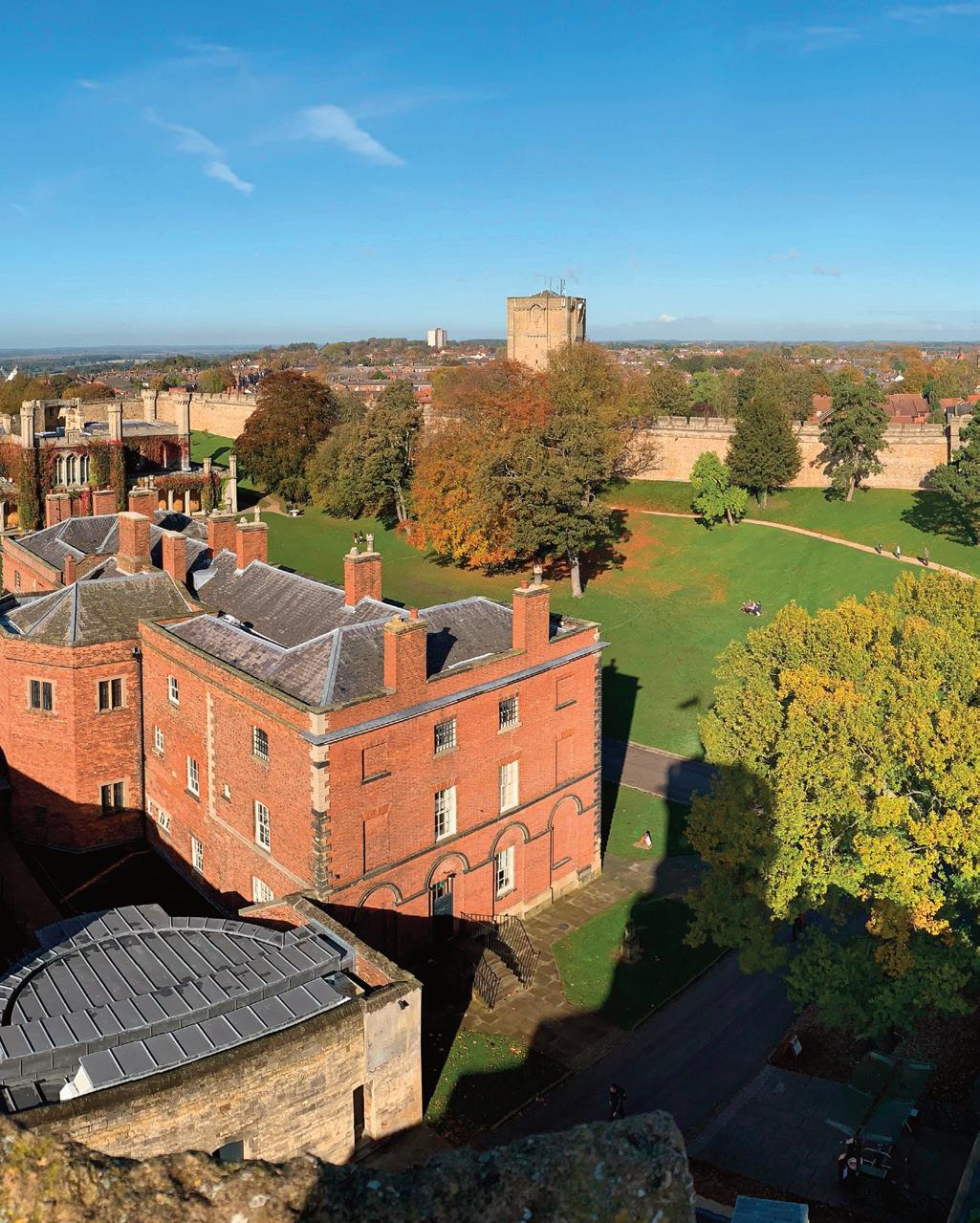
Lincoln’s Georgian Gaol was significantly redeveloped and extended in the 1840s for the ‘Separate System’ regime. Its unique chapel reflects the harsh reality of this, with each uncomfortable pew enclosed in a coffin-shaped booth so that the criminal within could only focus on the preacher at the pulpit, and not corrupt their neighbour. Today, only the front section of the Georgian Gaol remains, the rest being demolished to make way for the Victorian Prison. On the north-east corner, Cobb’s Hall was fitted up as Lincoln’s place of execution in 1815. Among the casualties, four died ‘on the new drop’ in full view of the people below in 1818. The last public execution occurred at Cobb’s Hall in 1859, but afterwards hangings continued within the castle grounds near the steps to Lucy Tower. These days, convicted criminals end up at HMP Lincoln on Greetwell Road, built in 1869–72, on the open grid system and with a castellated gateway. Initially it housed both sexes, but by the early twentieth century women were incarcerated at Nottingham instead. It also became the only prison for almost all the county. After executions ceased at the castle in 1877, the prison became the place where Lincolnshire’s, and later Nottinghamshire’s, murderers were hanged. A black flag always flew over the clock tower (behind the gateway) following a hanging. n
RUSTON BUILDINGS
Above: The coming of industry catapulted Lincoln into the modern era. Gigantic engineering plants developed, employing thousands of workers and becoming places of apprenticeship for generations, while their founders became household names citywide. Among these pioneers, the name of Joseph Ruston, a Justice of the Peace, mayor, politician and philanthropist, is perhaps most familiar. His name has been indelibly stamped on Lincoln engineering since 1857 when he joined Burton and Proctor’s small millwright’s business on Waterside South. This expanded as the Sheaf Iron Works, with Ruston eventually becoming sole proprietor and chairman. By the time of his death in 1897 his works had become a gargantuan industrial complex covering 17 acres and employing 2,550 people. Ruston’s underwent a number of transformations. During the First World War, the company turned to building submarine engines, boilers, torpedo parts, gun fittings and appliances for minesweeping and submarine capture. By 1918 it was Ruston and Hornsby Ltd, later becoming Ruston Gas Turbines in the 1960s, and finally a subsidiary of Siemens. n
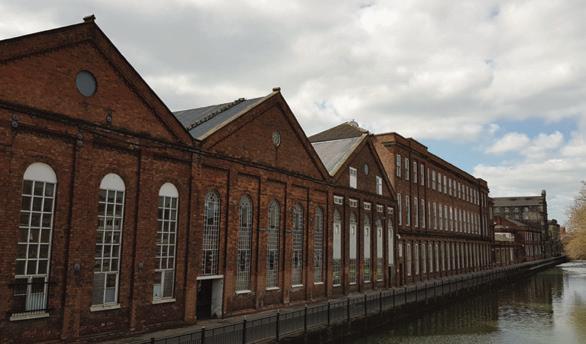
EXCHEQUER GATE
Right: Still protecting the western edge of Minster Yard, or Cathedral Close, is Exchequer Gate. Around 1285 Bishop Oliver Sutton first appealed to King Edward I for a 12-foot- high enclosure to ring the precinct, protecting canons and ministers. Work on the enclosure only began around thirty years later, it and was finished around 1327, the Exchequer Gate being its western access. Ostensibly built to house the dean and chapter’s financial records and registers, the threat of violence accounts for its defensive aspect. On 2nd July 1643, the Exchequer Gate was the scene of civil war action. Lincoln then being under Parliament, forty Royalist infiltrators hidden in the dean’s house tried to seize ammunition from the outer gatehouse, in an attempt to help King Charles I’s forces seize Lincoln. Until the 1700s Cathedral Close’s gates were locked nightly. The Exchequer Gate’s outer gateway was pulled down over 200 years ago, Pottergate Arch protected the southern entrance to the Close. Other portions of what would once have been an imposing defensive ring surrounding the cathedral are observable on Winnowsty Lane and Priory Gate (which was rebuilt in 1816). n

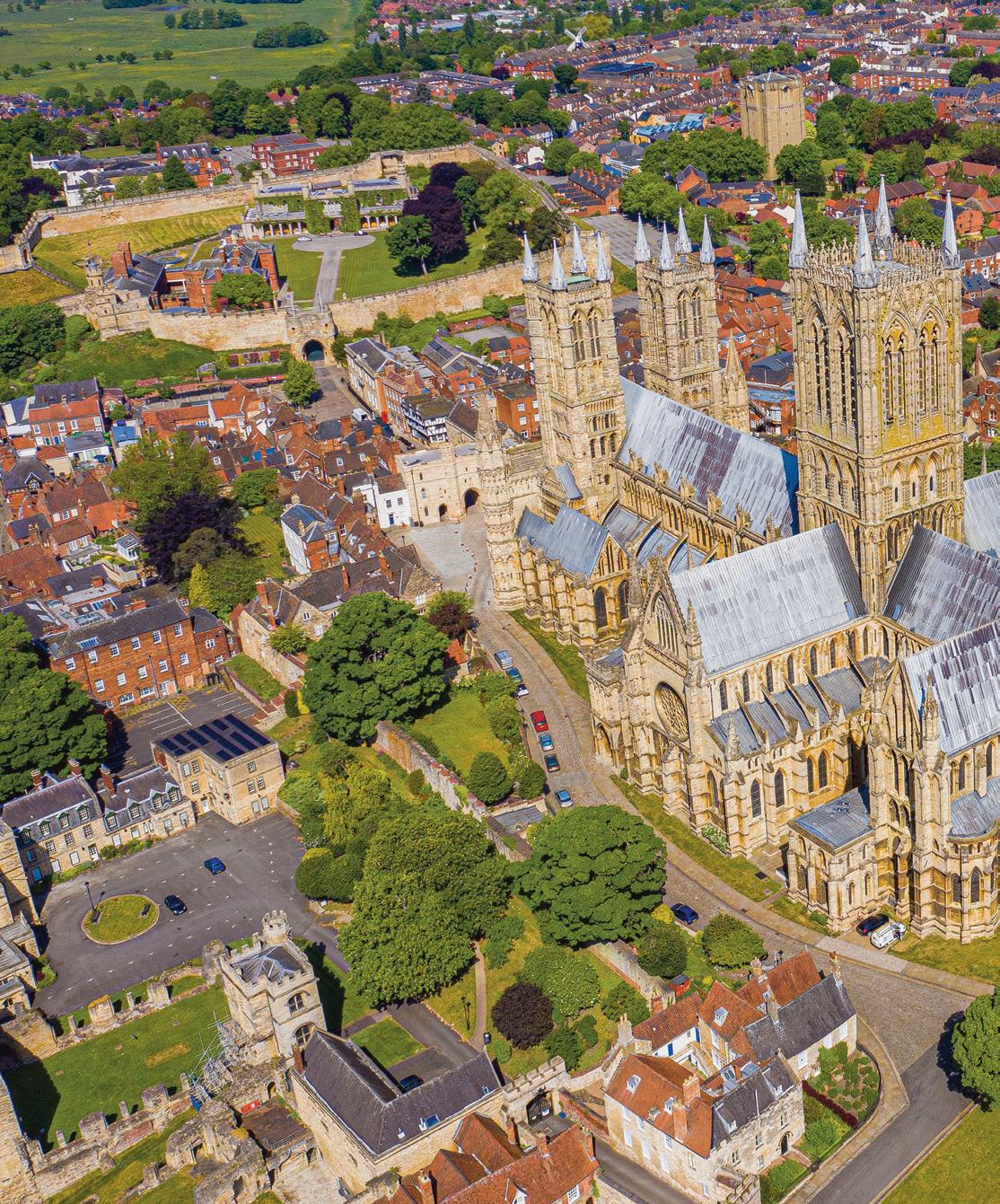
<< AND OF COURSE...

Lincoln Cathedral was built on the site of an earlier Saxon church, St Mary Magdalene’s, which sat somewhere near the present Nave and had its burial ground in (what is now) the Morning Chapel. Remigius’ cathedral was smaller than the one we see today. It was completed in 1092, but Remigius – having become the first Bishop of Lincoln – died days before its consecration. His successor as bishop, Robert Bloet, dedicated the church to the Blessed Virgin Mary. Much of Lincoln Cathedral as we see it today was begun by Hugh of Avalon, and carried on by his successors and devotees, William de Blois, Hugh de Wells, and Bishop Grosseteste. During this redevelopment, three workmen were killed and the cathedral much damaged when the Central Tower collapsed in 1237.Inside, the aisled Nave is a breathtaking example of Early English Gothic architecture, 80 feet from stone floor to vaulting. From around 1311, Lincoln Cathedral was the world’s tallest building until the Central Tower’s spire came crashing down during a storm in 1548; spires on the two western towers were taken down in 1807. The Central Tower – the tallest of the three at 271 feet – today houses a bell called ‘Great Tom’. It is not the original. The present Great Tom ‘only’ dates to 1835, its predecessor (then housed in one of the smaller towers) having been discovered to be cracked on Christmas Day 1828 following a change in its tone. n
Lincoln in 50 Buildings is available from all good county bookshops published by Amberley Books. It has 96 pages and 120 illustrations, featuring 50 of Lincoln’s most iconic buildings. Written by Daniel J Codd, £14.99, for further information call 01453 847800 or see amberley-books.com.





Divorce may no longer be a ‘War of the Roses’ but couples must still ensure a thorough parting process

By Lisa Boileau, Partner and Head of the Family team at Wilkin Chapman Solicitors.
HOW MANY OF YOU remember the award-winning film, The War of the Roses, which followed a wealthy couple whose marriage spirals into an outrageous and bitter divorce battle?
Hollywood stars Michael Douglas and Kathleen Turner played the roles perfectly – but as we all know, the reality is far removed from this kind of film fiction. And fortunately, it is the ‘facts’ that are being taken into consideration in 2020, as England and Wales take their final step towards divorce reform.
The Divorce, Dissolution & Separation Bill, which removes fault from the divorce process, is close to receiving Royal assent after passing through the remaining stages of its parliamentary journey. Whilst not cutting the time it takes to divorce, this legislation prevents couples having to play the ‘blame game’ – it is kinder, not quicker.
Presently, it is necessary to apportion blame on one side or the other – either that, or a couple must wait until they have separated for more than two years and have the other party’s consent to commence the divorce. If one side of the partnership does not agree, that wait extends to five years in the absence of any other grounds of divorce being available.
The new legislation means divorcing couples will only be required to make a statement saying that their marriage has broken down. This is already law in Scotland, where its introduction has not seen a marked increase in divorce – instead, it has allowed for an amicable parting of the ways within a reasonable time frame.
As this change is widely welcomed, there is one thing which should remain steadfast, and that is the need for individuals to remember the complex issues that must be considered as they move through the process.
This has been highlighted by the Law Society, as it calls for the legislation to be amended to ensure ex-spouses are not left financially vulnerable as a result of pension orders. Its President wants to see an amendment to the bill so that a final divorce order cannot be granted until the pension sharing order has taken effect.
Whether his words are acted upon remains to be seen. But they do show how vital it is for people to understand that the divorce itself is only a small aspect of the proceedings. It is the financial future of both parties that can often be the more important – who gets what, for or from whom, when and how much?
And this is where expert advice really makes the difference. For example, the division of a pension pot and the financial implications of splitting any assets often need careful negotiation – without such there can be serious consequences and unfairness.

For further information, please contact Lisa Boileau on 01522 515946 or by email lisa.boileau@wilkinchapman.co.uk or visit www.wilkinchapman.co.uk

THE HOME OF HISTORY
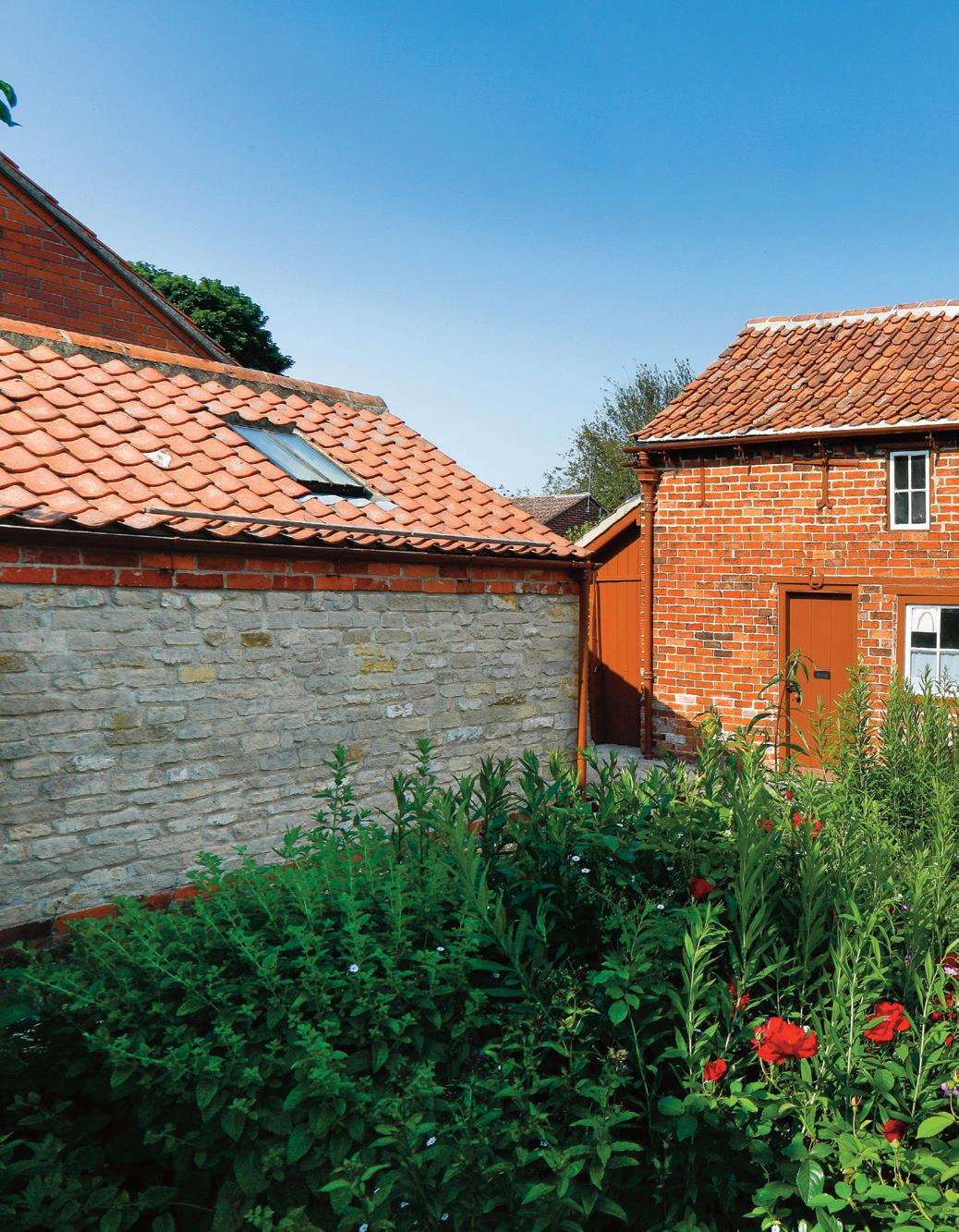



This month should have seen the reopening of one of Lincolnshire’s most unique museums. Since 2012, the team at North Kesteven District Council has been working hard to restore Mrs Hilda Smith’s cottage to a condition which would safely afford visitors a glimpse of village life in Navenby...


Words: Rob Davis. Images: Rob Davis, NKDC, Lincoln Conservation.









